#seamless api integration
Explore tagged Tumblr posts
Text
API Solutions by Webeside Technology: Connecting Your Business to Success
Webeside Technology provides advanced API integration solutions to help businesses streamline operations, enhance efficiency, and foster growth. Our team of experts delivers customized, seamless API connections that improve workflows and drive innovation. Whether you're looking to integrate new platforms or optimize existing systems, we offer reliable, scalable solutions tailored to your needs. Trust Webeside Technology to connect your business to success with powerful API integrations that unlock new opportunities and boost productivity.
#API integration services#Web API solutions#Seamless API integration#API development#Business API integration#API integration solutions#Webeside Technology API#Custom API integrations#API integration for business#API connection services#API development experts#Integrate APIs seamlessly#Scalable API solutions#API services provider#API integration company
1 note
·
View note
Text
Taming the CORS Beast

In this dynamic online world where web browsers are ubiquitous, protecting user data and preventing unauthorized access is crucial. CORS controls how browsers handle requests from a web page to resources hosted on a different site. One of the main security measures used by browsers is Correspondence (CORS). However, developers often encounter problems when setting up CORS, especially when integrating with external APIs or storing resources from multiple domains.
What is CORS?
The CORS feature in web browsers ensures that requests to resource from a different domain are handled differently from those sent from the original web application pages. This feature can be challenging to implement for developers due to how it affects the integration of external APIs and fetching resources.
Why Does CORS Errors Occurs?
CORS errors occur when a web application hosted on one domain tries to access resources (like APIs) hosted on another domain that has different origin policies. It may also happen if there is a difference in the port and the protocol. Browsers enforce these policies by blocking such requests unless the server explicitly allows them through CORS headers.
Common Scenarios Leading to CORS Errors:
API Integration: When a front-end application (running on `https://sample-example.com`) is tries to fetch data from an API (hosted on `https://sample-api.example-api.com`), the browser checks if `https://sample-api.example-api.com` allows requests from `https://sample-example.com`. If not configured correctly, CORS errors will occur.
Subdomains: Even requests between subdomains (`https://sample-app.example.com` to `https://sample-api.example.com`) can trigger CORS errors if not properly configured.
How to Resolve CORS Errors:
1. Server-Side Configuration:
-- CORS headers: Improved the server hosting API to include CORS headers in responses. These headers define resource permissions ('Access-Control-Allow-Origin'), permission methods ('Access-Control-Allow-Methods'), and other CORS-related settings. If your API is accessible from any source, you can set 'Access-Control-Allow-Origin: *' to allow requests from any source. However, due to security concerns, this method must be used with caution.
2. Proxy Servers:
- Reverse Proxy: Use a reverse proxy on your server to route API requests through the same domain as your frontend application. This effectively bypasses CORS restrictions since requests are made from the same origin.
3. Preflight Requests:
- OPTIONS Requests: For requests that might trigger CORS, browsers may send a preflight request (OPTIONS) to the server to check if the actual request (GET, POST, etc.) is allowed. Ensure your server responds correctly to OPTIONS requests with appropriate CORS headers.
4. Client-Side Handling:
- Fetch API: When making requests using JavaScript's Fetch API or XMLHttpRequest, handle CORS errors gracefully. You can catch these errors and provide meaningful feedback to users or retry the request if possible.
5. Development Environment:
- Browser Extensions: During development, browser extensions like CORS Everywhere or modifying browser settings can temporarily disable CORS restrictions. However, these should not be used in production environments.
Conclusion:
CORS errors are essential for web security, protecting users and data integrity. Developers can prevent these issues by understanding their causes and using proper server-side configurations or proxy solutions. Emphasizing security and following best practices ensures a reliable web application environment.
This blog post explores the origins of CORS errors and offers effective solutions, promoting seamless API integration and secure cross-origin data exchange in web development.
Visit: Covalense Digital LinkedIn
0 notes
Text
Galileo GDS API Integration: Transforming the Travel Industry with Seamless Connectivity

The travel industry has undergone a digital revolution in recent years, and one of the biggest game-changers in this transformation is Global Distribution Systems (GDS). These systems act as a bridge between travel service providers and booking platforms, making it easier for businesses to connect travelers with flights, hotels, car rentals, and more. Among the most trusted and widely used GDS platforms is Galileo, an advanced system that offers real-time data access to travel businesses worldwide.
For travel agencies, online travel portals, and service providers, integrating the Galileo GDS API is a strategic move that can significantly enhance business operations, improve customer experiences, and drive revenue growth. But what exactly is Galileo GDS API integration, and how can it reshape the travel industry? Let’s dive in.
Understanding Galileo GDS API Integration
Galileo GDS API integration is a technological solution that allows travel businesses to access and offer a vast range of travel services directly from a unified system. Instead of managing multiple inventories manually, businesses can use the API to pull real-time data from airlines, hotels, car rental services, and other travel suppliers.
This API acts as a direct channel of communication between travel service providers and travel agencies, enabling seamless bookings and real-time availability updates. Whether it’s a small travel startup or a large OTA (Online Travel Agency), integrating this API can make operations smoother and more efficient.
Why Travel Businesses Need Galileo GDS API Integration
The modern traveler expects convenience, speed, and transparency when booking trips. Without an efficient system, travel businesses risk losing potential customers due to outdated processes and limited service offerings. Galileo GDS API integration provides the perfect solution by offering:
Instant Access to Global Inventory – Travel agencies can access a vast range of travel services, including flights, hotels, and car rentals, from suppliers worldwide.
Automated Booking & Reservation System – Reduce manual efforts and human errors with automated, real-time booking capabilities.
Real-Time Pricing & Availability Updates – Customers can view and compare the latest prices, ensuring a competitive edge for businesses.
Enhanced User Experience – A seamless, intuitive interface improves customer satisfaction and loyalty.
Flexible & Scalable Solutions – Businesses can customize the API integration to align with their needs, whether they are a startup or an established travel brand.
Multi-Currency & Multi-Language Support – Cater to a global audience by offering different currencies and languages for seamless transactions.
Better Business Insights – Advanced reporting and analytics help businesses understand customer preferences and trends.
How Galileo GDS API Works
Integrating the Galileo GDS API into a travel portal involves connecting the API with the business’s booking engine. This connection enables the platform to fetch real-time data on flights, hotels, and other travel services. The process typically includes:
API Key Registration – Businesses acquire API credentials from the GDS provider.
Customization & Integration – Developers tailor the API to fit the business model and integrate it into the booking platform.
Testing & Optimization – Before launching, the system is tested for performance, security, and functionality.
Go-Live & Continuous Monitoring – The API is deployed, and businesses continue to optimize it based on user interactions and new industry updates.
Challenges of GDS API Integration & How to Overcome Them
While the advantages of Galileo GDS API integration are significant, businesses might encounter challenges during implementation. Some of these challenges include:
Technical Complexity – API integration requires technical expertise, making it essential to hire experienced developers or partner with technology providers.
Compliance & Regulations – Travel businesses must comply with industry regulations, data security standards, and payment protocols.
Initial Costs – While the long-term benefits are immense, initial setup costs can be a concern for small businesses.
To overcome these challenges, businesses should:
Choose a reliable technology partner for seamless API integration.
Conduct thorough testing to ensure the system functions smoothly.
Stay updated on compliance requirements and industry best practices.
Future of Travel with Galileo GDS API

The travel industry continues to evolve with emerging technologies, and GDS API integration is expected to become even more advanced. With the rise of Artificial Intelligence (AI) and Machine Learning (ML), personalized travel recommendations and predictive analytics will enhance customer experiences. Additionally, blockchain technology could revolutionize secure travel bookings and transactions, further improving transparency and trust in the industry.
Final Thoughts
Galileo GDS API integration is more than just a technical solution—it’s a strategic investment for travel businesses looking to thrive in a competitive market. By adopting this powerful tool, businesses can enhance their service offerings, streamline operations, and ultimately provide a better experience for travelers worldwide.
For travel businesses ready to scale, integrating Galileo GDS API is the key to staying ahead of the curve. The future of travel is digital, and those who leverage innovative solutions like GDS API integration will be at the forefront of the industry’s growth.
#galileo gds api#galileo gds api integration#galileo api integration#seamless travel#travelsolutions
0 notes
Text
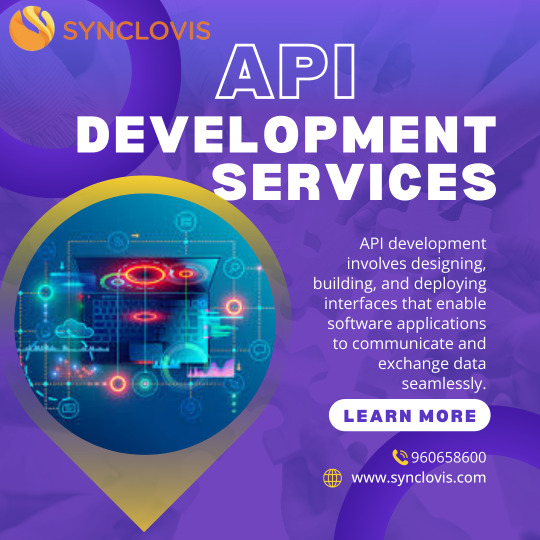
"Essential API Tags for Seamless Integration"
0 notes
Text
SQL for Hadoop: Mastering Hive and SparkSQL
In the ever-evolving world of big data, having the ability to efficiently query and analyze data is crucial. SQL, or Structured Query Language, has been the backbone of data manipulation for decades. But how does SQL adapt to the massive datasets found in Hadoop environments? Enter Hive and SparkSQL—two powerful tools that bring SQL capabilities to Hadoop. In this blog, we'll explore how you can master these query languages to unlock the full potential of your data.
Hive Architecture and Data Warehouse Concept
Apache Hive is a data warehouse software built on top of Hadoop. It provides an SQL-like interface to query and manage large datasets residing in distributed storage. Hive's architecture is designed to facilitate the reading, writing, and managing of large datasets with ease. It consists of three main components: the Hive Metastore, which stores metadata about tables and schemas; the Hive Driver, which compiles, optimizes, and executes queries; and the Hive Query Engine, which processes the execution of queries.
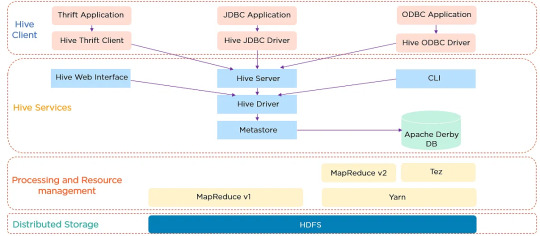
Hive Architecture
Hive's data warehouse concept revolves around the idea of abstracting the complexity of distributed storage and processing, allowing users to focus on the data itself. This abstraction makes it easier for users to write queries without needing to know the intricacies of Hadoop.
Writing HiveQL Queries
HiveQL, or Hive Query Language, is a SQL-like query language that allows users to query data stored in Hadoop. While similar to SQL, HiveQL is specifically designed to handle the complexities of big data. Here are some basic HiveQL queries to get you started:
Creating a Table:
CREATE TABLE employees ( id INT, name STRING, salary FLOAT );
Loading Data:
LOAD DATA INPATH '/user/hive/data/employees.csv' INTO TABLE employees;
Querying Data:
SELECT name, salary FROM employees WHERE salary > 50000;
HiveQL supports a wide range of functions and features, including joins, group by, and aggregations, making it a versatile tool for data analysis.

HiveQL Queries
SparkSQL vs HiveQL: Similarities & Differences
Both SparkSQL and HiveQL offer SQL-like querying capabilities, but they have distinct differences:
Execution Engine: HiveQL relies on Hadoop's MapReduce engine, which can be slower due to its batch processing nature. SparkSQL, on the other hand, leverages Apache Spark's in-memory computing, resulting in faster query execution.
Ease of Use: HiveQL is easier for those familiar with traditional SQL syntax, while SparkSQL requires understanding Spark's APIs and dataframes.
Integration: SparkSQL integrates well with Spark's ecosystem, allowing for seamless data processing and machine learning tasks. HiveQL is more focused on data warehousing and batch processing.
Despite these differences, both languages provide powerful tools for interacting with big data, and knowing when to use each is key to mastering them.
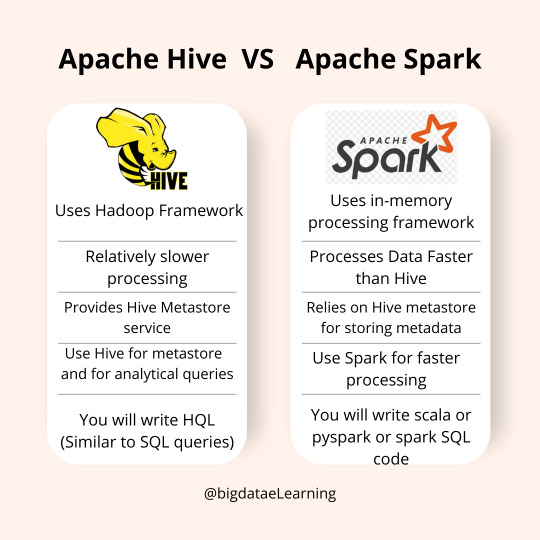
SparkSQL vs HiveQL
Running SQL Queries on Massive Distributed Data
Running SQL queries on massive datasets requires careful consideration of performance and efficiency. Hive and SparkSQL both offer powerful mechanisms to optimize query execution, such as partitioning and bucketing.
Partitioning, Bucketing, and Performance Tuning
Partitioning and bucketing are techniques used to optimize query performance in Hive and SparkSQL:
Partitioning: Divides data into distinct subsets, allowing queries to skip irrelevant partitions and reduce the amount of data scanned. For example, partitioning by date can significantly speed up queries that filter by specific time ranges.
Bucketing: Further subdivides data within partitions into buckets based on a hash function. This can improve join performance by aligning data in a way that allows for more efficient processing.
Performance tuning in Hive and SparkSQL involves understanding and leveraging these techniques, along with optimizing query logic and resource allocation.

Hive and SparkSQL Partitioning & Bucketing
FAQ
1. What is the primary use of Hive in a Hadoop environment? Hive is primarily used as a data warehousing solution, enabling users to query and manage large datasets with an SQL-like interface.
2. Can HiveQL and SparkSQL be used interchangeably? While both offer SQL-like querying capabilities, they have different execution engines and integration capabilities. HiveQL is suited for batch processing, while SparkSQL excels in in-memory data processing.
3. How do partitioning and bucketing improve query performance? Partitioning reduces the data scanned by dividing it into subsets, while bucketing organizes data within partitions, optimizing joins and aggregations.
4. Is it necessary to know Java or Scala to use SparkSQL? No, SparkSQL can be used with Python, R, and SQL, though understanding Spark's APIs in Java or Scala can provide additional flexibility.
5. How does SparkSQL achieve faster query execution compared to HiveQL? SparkSQL utilizes Apache Spark's in-memory computation, reducing the latency associated with disk I/O and providing faster query execution times.
Home
instagram
#Hive#SparkSQL#DistributedComputing#BigDataProcessing#SQLOnBigData#ApacheSpark#HadoopEcosystem#DataAnalytics#SunshineDigitalServices#TechForAnalysts#Instagram
2 notes
·
View notes
Text
🎬 Entertainment App Development Services: Build the Future of Digital Entertainment
In a digital-first world where users stream, binge, listen, and share content 24/7, the demand for entertainment app development services is skyrocketing. Whether you're launching the next Netflix, Spotify, or a regional OTT platform, a powerful entertainment app can place your content at the fingertips of millions.
This blog explores everything you need to know about building a successful entertainment mobile app—features, tech stack, monetization models, and how the right development partner can turn your vision into a captivating, scalable reality.
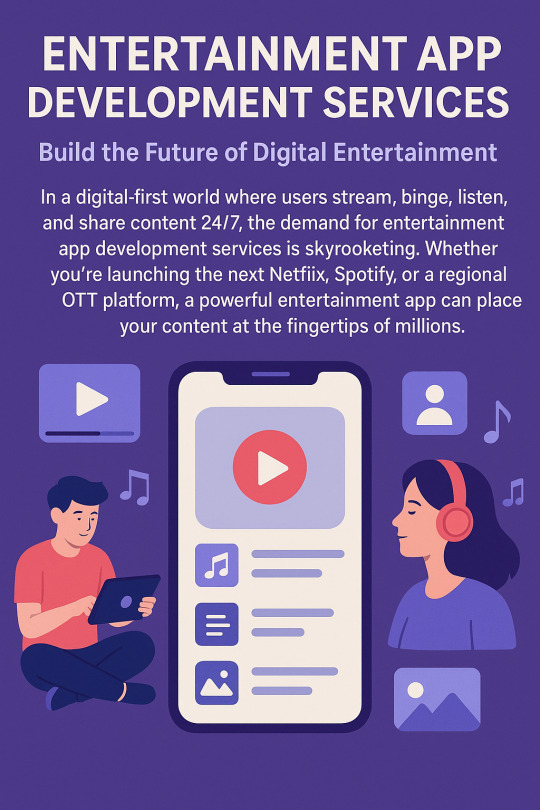
📱 Why You Need an Entertainment App in 2025
The entertainment industry is undergoing a massive digital shift. With over 6.5 billion smartphone users globally, streaming content—whether video, music, or live performances—has become the new normal. Audiences demand convenience, personalization, and immersive experiences, all of which can be delivered through a well-developed mobile application.
From OTT platform development to podcast and music streaming apps, custom solutions are now essential for media brands, production houses, indie artists, and entertainment startups.
📈 Market Stats Worth Noting:
The global video streaming market is expected to surpass $920 billion by 2030.
Time spent on entertainment and media apps increased by 40% post-pandemic.
Subscription-based platforms like Netflix, Hotstar, and Gaana have seen record-breaking growth.
If you're in the business of content creation or distribution, now is the time to invest in expert entertainment app development services.
🛠️ Core Features of a Winning Entertainment App
To compete with giants like Netflix, Spotify, or Amazon Prime, your app must go beyond basic functionality. Here's what users expect from a top-tier entertainment mobile app:
1. Content Streaming (Video/Audio)
High-quality streaming with adaptive bitrate, low buffering, and seamless playback across devices.
2. User Profiles & Personalization
Smart algorithms that recommend content based on watch history, preferences, or listening habits.
3. Subscription & Monetization Models
Support for freemium access, in-app purchases, advertisements, and recurring subscriptions.
4. Search & Filter
Powerful content discovery with keyword search, genres, languages, trending content, and more.
5. Multi-Platform Access
Cross-platform compatibility (Android, iOS, smart TVs, tablets, etc.) with a unified user experience.
6. Offline Downloads
Let users enjoy content without internet access by enabling secure offline downloads.
7. Live Streaming
Incorporate live shows, concerts, or podcasts with real-time chat and engagement.
8. Push Notifications
Keep users engaged by notifying them about new releases, trending content, and personalized suggestions.
9. Social Sharing & Integration
Let users share what they watch or listen to on social media, enhancing app visibility and virality.
🧠 Choosing the Right Technology Stack
Behind every great entertainment app is a powerful and scalable tech architecture. Here's what a reliable entertainment app development company should offer:
➤ Frontend (Mobile App Development)
React Native / Flutter for cross-platform development
Swift (iOS) and Kotlin (Android) for native apps
Custom UI/UX based on Figma, XD, or Sketch
➤ Backend
Node.js, Laravel, or Django for scalable API architecture
MongoDB or PostgreSQL for content and user data
Real-time databases like Firebase for chat, notifications, and analytics
➤ Streaming & CDN
Integration with AWS CloudFront, Vimeo OTT, or Wowza
DRM support to prevent piracy
Adaptive Bitrate Streaming (HLS, MPEG-DASH)
➤ Analytics & Recommendation Engine
Firebase, Mixpanel, or Google Analytics for user behavior
AI-powered recommendation engine to boost engagement and retention
💰 Monetization Strategies for Entertainment Apps
Monetization is crucial. Your entertainment app can generate recurring revenue through several models:
🔒 Subscription (SVOD)
Offer access to premium content on a weekly, monthly, or annual basis.
🎯 Advertisement (AVOD)
Free content monetized through banner ads, interstitials, or video ads using Google AdMob or Facebook Audience Network.
📥 Pay-per-view
Ideal for exclusive concerts, movie releases, or premium shows.
💼 Freemium
Provide basic content for free while charging for access to premium features or shows.
🤝 Why Hire Expert Entertainment App Developers?
Entertainment apps are high-stakes projects. Performance issues, bugs, or poor user experience can lead to instant churn. Here’s why hiring a team with domain expertise in entertainment mobile app development is critical:
They understand media licensing, content management, and user behavior.
They can optimize infrastructure for millions of concurrent users.
They’re familiar with UI/UX best practices that align with binge-watching or continuous listening behaviors.
They offer post-launch support for updates, bug fixes, and user feedback handling.
A team like Kickass Developers, with expertise in custom mobile app development, OTT app development, and audio/video streaming, ensures your idea is executed with precision and long-term scalability.
🚀 Final Thoughts: Your Entertainment App Is the Future of Engagement
Whether you’re building a regional OTT app, a music discovery platform, or a niche video streaming service, your success hinges on the right blend of technology, UX, scalability, and speed to market.
Investing in experienced entertainment app development services is your first step toward captivating your audience, building loyalty, and driving recurring revenue.
📞 Ready to Build Your Entertainment App?
Looking for a team that understands the entertainment industry inside and out?
Kickass Developers specializes in designing custom, high-performance entertainment applications tailored to your audience, brand, and growth goals.
📧 Contact us today at [email protected] 🌐 Or visit us at kickassdevelopers.com
#Entertainment App Developers#OTT App Development#Video Streaming App Services#Music App Development#Android Entertainment App#iOS Video App#Podcast App Developers#Live Streaming App Development#Subscription App Development
3 notes
·
View notes
Text
Unleash the Power of Rewards: A Comprehensive Earning Platform

Demo : https://cancoda.com
User Features:
🏠 Home Page Create a captivating first impression with a dynamic landing page that showcases an array of rewarding opportunities available at your users' fingertips.
💰 Earn Page Maximize your users' earning potential by offering a diverse range of options, such as engaging surveys, custom offers, and more. Provide endless earning opportunities that keep users coming back.
💳 Cash Out Page Allow users to seamlessly convert points into real-world value with multiple payout methods. Admins can add custom methods, including cash, skins, and gift cards, offering flexibility for every user.
🏆 Leaderboard Encourage healthy competition with a dynamic leaderboard, motivating users to earn more and reach the top.
🌟 Daily Winners Highlight daily winners to celebrate their achievements and keep excitement high. Reward dedication and encourage ongoing participation.
📈 Transactions Page Ensure transparency and trust by enabling users to easily track their transaction history, offering a seamless and reliable earning experience.
📊 Analytics Gain valuable insights into user behavior, offer performance, and overall site engagement. Use these insights to make data-driven decisions for continuous growth and improvement.
🔥 Live Offer Walls Provide users with real-time access to top-performing offer walls, keeping the opportunities fresh and abundant for maximum engagement.
👥 Community Foster a vibrant, interactive community where users can connect, share tips, and celebrate their rewards journey together.
🆘 Support Our dedicated support section ensures prompt assistance, guaranteeing a seamless experience for both administrators and users alike. Your success is our priority!
Admin Features:
Comprehensive Control for Seamless Management
🏠 Home Page Customization Easily update content and layout to match your brand’s vision. Personalize the website to provide a unique experience for users.
👥 User Management Effortlessly manage user accounts, ensuring smooth operations and enhancing user retention.
💳 User Withdrawals Handle withdrawals efficiently, offering timely payouts through various methods to keep users satisfied.
🚫 Banned Users Maintain a secure and respectful community by managing banned users effectively.
💬 User Chat Enable real-time communication between users to foster collaboration, interaction, and engagement.
🔄 Referral Settings Boost platform growth with a powerful referral system that incentivizes existing users and attracts new ones.
📱 Social Media Integration Expand your reach by seamlessly connecting with social media platforms, driving organic growth and increasing exposure.
📊 Manage Offers Control the offers available to users, ensuring a diverse selection that maximizes their earning potential.
💵 Payment Methods Customize the payout options to offer users a variety of convenient and flexible methods.
🚀 Live Offer Walls Stay competitive by keeping live offer walls up to date with the latest opportunities, providing users with fresh, lucrative options.
⚙️ Settings Refine platform settings to optimize performance and deliver a seamless, user-friendly rewards experience.
API and Offer Integration
Manage and customize API integrations for various networks, including:
Torox
Adgatemedia
Lootably
Revlum, etc.
Add custom offers and offer walls in the same way as API offers, ensuring a flexible, customizable rewards system.
Postbacks & Analytics Access all postback URLs for networks in one centralized location. Manage and monitor data effectively to make informed decisions.
Free Features Enjoy access to a variety of features, including multiple postbacks, all at no additional cost.
cancoda - Overview
https://www.linkedin.com/in/hansaldev/
6 notes
·
View notes
Text
The Next Generation Native REST API Client
Welcome to the official launch of NativeRest—the native REST API client designed to make your API development journey smoother, faster, and more intuitive than ever.
If you’ve used tools like Postman ↗, Insomnia ↗, or HTTPie ↗, you know how essential a powerful API client is for modern development. But what if you could have a tool that combines high performance, a beautiful native interface, and seamless workflow integration—all in one package? That’s where NativeRest comes in.
Why NativeRest?
NativeRest is built from the ground up for speed, efficiency, and a truly native experience. Here’s what sets it apart:
Lightning-Fast Performance: NativeRest leverages native technologies for a snappy, responsive UI that never gets in your way.
Intuitive Design: Enjoy a clutter-free, modern interface that puts your requests and responses front and center.
Advanced Collaboration: Built-in features make it easy to share collections, environments, and test results with your team.
Robust Security: Your data stays private, with secure local storage and granular permission controls.
Cross-Platform Native Experience: Whether you’re on macOS, Windows, or Linux, NativeRest feels right at home.
Get Started
Ready to try it out? Download NativeRest - native rest api client↗ and see how it compares to your current workflow. Want a sneak peek? Check out our YouTube channel ↗ for quick tutorials and feature highlights.
Welcome to the future of API development—welcome to NativeRest!
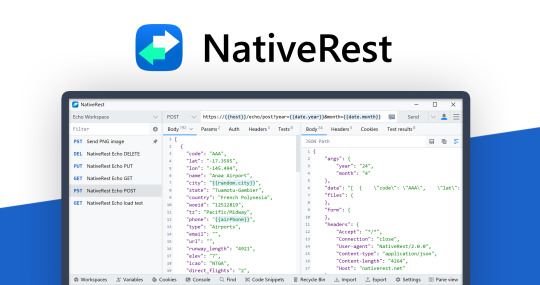
2 notes
·
View notes
Text
Seamless PHP Web Development Services– Delimp Technology
Looking to build Fast, Secure, and dynamic PHP Web Development Services? At Delimp Technology, we specialize in high-performance PHP web development solutions that are made for your business requirements. From Custom CMS development to E-commerce Solutions and API Integration, our expert PHP developers ensure seamless functionality and scalability. Need a responsive, feature-rich website. Let’s build it together!
2 notes
·
View notes
Text
Taming the CORS Beast

CORS errors are essential for web security, protecting users and data integrity. Developers can prevent these issues by understanding their causes and using proper server-side configurations or proxy solutions. Emphasizing security and following best practices ensures a reliable web application environment
In this dynamic online world where web browsers are ubiquitous, protecting user data and preventing unauthorized access is crucial. CORS controls how browsers handle requests from a web page to resources hosted on a different site. One of the main security measures used by browsers is Correspondence (CORS). However, developers often encounter problems when setting up CORS, especially when integrating with external APIs or storing resources from multiple domains.
What is CORS?
The CORS feature in web browsers ensures that requests to resource from a different domain are handled differently from those sent from the original web application pages. This feature can be challenging to implement for developers due to how it affects the integration of external APIs and fetching resources.
Why Does CORS Errors Occurs?
CORS errors occur when a web application hosted on one domain tries to access resources (like APIs) hosted on another domain that has different origin policies. It may also happen if there is a difference in the port and the protocol. Browsers enforce these policies by blocking such requests unless the server explicitly allows them through CORS headers.
Common Scenarios Leading to CORS Errors:
API Integration: When a front-end application (running on `https://sample-example.com`) is tries to fetch data from an API (hosted on `https://sample-api.example-api.com`), the browser checks if `https://sample-api.example-api.com` allows requests from `https://sample-example.com`. If not configured correctly, CORS errors will occur.
Subdomains: Even requests between subdomains (`https://sample-app.example.com` to `https://sample-api.example.com`) can trigger CORS errors if not properly configured.
How to Resolve CORS Errors:
1. Server-Side Configuration:
-- CORS headers: Improved the server hosting API to include CORS headers in responses. These headers define resource permissions ('Access-Control-Allow-Origin'), permission methods ('Access-Control-Allow-Methods'), and other CORS-related settings. If your API is accessible from any source, you can set 'Access-Control-Allow-Origin: *' to allow requests from any source. However, due to security concerns, this method must be used with caution.
2. Proxy Servers:
- Reverse Proxy: Use a reverse proxy on your server to route API requests through the same domain as your frontend application. This effectively bypasses CORS restrictions since requests are made from the same origin.
3. Preflight Requests:
- OPTIONS Requests: For requests that might trigger CORS, browsers may send a preflight request (OPTIONS) to the server to check if the actual request (GET, POST, etc.) is allowed. Ensure your server responds correctly to OPTIONS requests with appropriate CORS headers.
4. Client-Side Handling:
- Fetch API: When making requests using JavaScript's Fetch API or XMLHttpRequest, handle CORS errors gracefully. You can catch these errors and provide meaningful feedback to users or retry the request if possible.
5. Development Environment:
- Browser Extensions: During development, browser extensions like CORS Everywhere or modifying browser settings can temporarily disable CORS restrictions. However, these should not be used in production environments.
Conclusion:
CORS errors are essential for web security, protecting users and data integrity. Developers can prevent these issues by understanding their causes and using proper server-side configurations or proxy solutions. Emphasizing security and following best practices ensures a reliable web application environment.
This blog post explores the origins of CORS errors and offers effective solutions, promoting seamless API integration and secure cross-origin data exchange in web development.
At Covalensedigital, we have assisted our customers in resolving CORS errors ensuring seamless API integration and leveraging secure cross-origin data exchange in their web applications using proxy settings.
To know more visit: Covalensedigital
To Contact Us: Covalensedigital Solutions
0 notes
Text
Seamless Travel Made Simple: How Travelport API is Revolutionizing Online Bookings

The way we travel has transformed dramatically over the past decade. Long gone are the days of walking into a travel agency and flipping through catalogs to plan a trip. Today, everything is just a few clicks away, and technology is at the heart of this revolution. But have you ever wondered what makes all these seamless bookings and real-time price comparisons possible? The answer lies in API integration, and one of the biggest players in this space is Travelport API.
If you're a travel business looking to level up your services, or a curious traveler interested in how your bookings work behind the scenes, stick around. We're about to dive deep into the world of Travelport API and how it's redefining the way we explore the world!
What is Travelport API?
Think of Travelport API as the magic that happens when different travel services—flights, hotels, car rentals, and more—connect in one place. Travelport, a leading Global Distribution System (GDS), provides this technology, allowing online travel agencies (OTAs), travel startups, and businesses to access a global inventory of travel services in real time.
With Travelport API, travel businesses can integrate flight search engines, hotel booking platforms, and even rental car services seamlessly. This means customers get a faster, smarter, and more convenient booking experience. No more switching between multiple websites—everything is streamlined into a single platform.
Why Travelport API is a Game-Changer for Travel Businesses
So why is Travelport API such a big deal? Here are some key benefits that make it a must-have for travel businesses:
✅ Access to a Massive Inventory: Instantly connect with thousands of airlines, hotels, and car rental services worldwide.
✅ Real-Time Data & Pricing: No more outdated information—everything is updated instantly to provide the best available rates.
✅ Automation & Efficiency: Automates bookings, cancellations, and modifications, saving time and reducing human errors.
✅ Seamless User Experience: Ensures a smooth and fast booking process, keeping travelers happy and engaged.
✅ Competitive Edge: Stay ahead in the travel industry by offering a more advanced, tech-driven booking system.
For travel businesses, this means higher customer retention, improved revenue streams, and a smoother operational workflow.
How Travelport API Works
Let’s break it down in simple terms. Integrating Travelport API into a travel platform involves these key steps:
🔹 Authentication & API Setup – Businesses get access credentials to connect with the Travelport system.
🔹 Search & Booking Engine – Users can browse flights, hotels, and car rentals in real time.
🔹 Payment Integration – Secure transactions allow users to pay online without hassle.
🔹 User-Friendly UI/UX – A well-designed interface ensures a smooth booking experience.
🔹 Testing & Deployment – The system is optimized before going live to provide a seamless customer journey.
In short, the API acts as a bridge between travel suppliers and customers, ensuring a fast, reliable, and automated booking experience.
The Future of Travel Technology with Travelport API
The travel industry is evolving at lightning speed, and Travelport API is at the forefront of this transformation. With artificial intelligence, machine learning, and predictive analytics being integrated into travel platforms, the future of booking is becoming smarter and more personalized than ever before.

Imagine a world where:
✔️ Your booking platform suggests flights based on your past travel history.
✔️ AI predicts the best time to book flights for the lowest price.
✔️ Voice assistants help you plan an entire trip without lifting a finger.
Sounds futuristic? Well, it’s happening sooner than you think!
Why Travelport API Integration is a Must for Travel Startups & OTAs
If you’re running a travel startup or an online travel agency (OTA), integrating Travelport API isn’t just an option—it’s a necessity. With competition in the travel sector growing rapidly, businesses need to adopt advanced technologies to stay relevant and profitable.
Here’s why startups and OTAs should invest in Travelport API:
🔸 Speed & Efficiency – Get a ready-to-use solution instead of building a booking system from scratch.
🔸 Scalability – Expand your services without the headache of complex technical changes.
🔸 Better Customer Experience – Offer faster bookings, competitive pricing, and real-time availability.
🔸 Increased Revenue – More efficient operations lead to higher conversions and better profit margins.
For any travel business that wants to thrive in the digital world, Travelport API is a gateway to success.
Final Thoughts: The Power of API-Driven Travel
Technology is changing the way we explore the world, and integrations like Travelport API integration are leading the charge. Whether you're a traveler looking for seamless bookings or a business aiming to enhance its services, understanding the power of APIs is key to staying ahead in the modern travel industry.
As more companies adopt AI-driven, real-time, and data-powered travel solutions, the experience of booking trips will only get better. And if you’re a travel business? It’s time to embrace the future and integrate smart travel solutions that take your platform to the next level!
0 notes
Text
How Enterprises Use Voice APIs for Call Routing and IVR Automation
Enterprises today handle thousands of customer calls every day. To manage these efficiently, many are turning to voice APIs. These tools help businesses automate call routing and interactive voice response (IVR) systems.

What Are Voice APIs?
Voice APIs are software interfaces that allow developers to build voice-calling features into apps or systems. These APIs can trigger actions like placing calls, receiving them, or converting speech to text. For enterprises, voice APIs make it easy to integrate intelligent call handling into their workflow.
Smarter Call Routing
Call routing directs incoming calls to the right agent or department. With voice APIs, this process becomes dynamic and rules based.
For example, a customer calling from a VIP number can be routed directly to a premium support team. APIs allow routing rules based on caller ID, time of day, location, or even previous interactions. This reduces wait times and improves customer satisfaction.
Automated IVR Systems
Interactive Voice Response (IVR) lets callers interact with a menu system using voice or keypad inputs. Traditional IVR systems are rigid and often frustrating.
Voice APIs enable smarter, more personalized IVR flows. Enterprises can design menus that adapt in real time. For instance, returning callers may hear different options based on their past issues. With speech recognition, users can speak naturally instead of pressing buttons.
Scalability and Flexibility
One major benefit of using voice API is scalability. Enterprises don’t need physical infrastructure to manage call volume. The cloud-based nature of voice APIs means businesses can handle spikes in calls without losing quality.
Also, changes to call flows can be made quickly. New routing rules or IVR scripts can be deployed without touching hardware. This agility is crucial in fast-moving industries.
Enhanced Analytics and Integration
Voice APIs also provide detailed data. Enterprises can track call duration, drop rates, wait times, and common IVR paths. This data helps optimize performance and identify pain points.
Moreover, APIs easily integrate with CRMs, ticketing systems, and analytics tools. This ensures a seamless connection between calls and other business processes.
Final Thoughts
Voice APIs are transforming how enterprises manage voice communications. From intelligent call routing to adaptive IVR systems, the benefits are clear. Enterprises that adopt these tools gain speed, efficiency, and better customer experience, and that too without a lot of effort.
4 notes
·
View notes
Text
Integrating Skill Assessments into Your Existing HR Systems

Introduction
As organizations strive to build a skilled and efficient workforce, integrating skill assessments into existing HR systems has become a crucial strategy. By embedding skill evaluations within HR workflows, companies can enhance hiring accuracy, streamline employee development, and make data-driven workforce decisions. This blog explores the benefits, challenges, and best practices of integrating skill assessments into HR systems, with insights on how platforms like Gappeo can facilitate the process.
Why Integrate Skill Assessments into HR Systems?
Integrating skill assessments within HR platforms offers numerous advantages, including:
Improved Hiring Accuracy: Objective skill evaluations help recruiters identify the most suitable candidates, reducing reliance on resumes alone.
Efficient Onboarding: Pre-assessed skills enable HR teams to tailor onboarding programs, ensuring new hires receive targeted training.
Employee Development & Training: Ongoing skill assessments allow HR teams to track employee growth and implement personalized training programs.
Workforce Planning: Insights from assessments help HR leaders identify skill gaps and plan for future workforce needs.
Key Considerations for Integration
Before incorporating skill assessments into your HR system, consider the following:
Compatibility: Ensure the assessment platform integrates seamlessly with your existing HR software (e.g., ATS, LMS, or HRIS).
Customization: Choose a system that allows tailored assessments aligned with job roles and industry needs.
Scalability: The platform should support growing workforce demands and adapt to evolving skill requirements.
User Experience: Both recruiters and candidates should find the system easy to navigate and engage with.
How Gappeo Simplifies Skill Assessment Integration
Gappeo, a leading talent and skill assessment platform, offers seamless integration with various HR systems. Key features include:
Pre-Built API Integrations: Easily connect with popular HR platforms.
Customizable Assessment Modules: Design skill tests specific to job roles.
Audio and Video Assessments: Enhance evaluation accuracy by analyzing verbal and non-verbal cues.
Comprehensive Reporting: Generate insights to support hiring and workforce development decisions.
Steps to Successfully Integrate Skill Assessments
Evaluate Your HR System: Assess your current HR software capabilities and identify integration points.
Select the Right Assessment Platform: Choose a solution like Gappeo that aligns with your HR objectives.
Customize Assessments: Develop skill tests that reflect the competencies required for different roles.
Pilot Test the Integration: Run a small-scale implementation to ensure seamless functionality.
Train HR Teams: Educate HR personnel on using the integrated system effectively.
Monitor and Optimize: Continuously track performance metrics and refine assessment processes.
Conclusion
Integrating skill assessments into HR systems is a game-changer for talent management, enabling data-backed hiring, employee development, and strategic workforce planning. With solutions like Gappeo, organizations can streamline skill evaluations while ensuring a seamless experience for both HR professionals and candidates.
Ready to enhance your HR processes? Discover how Gappeo can help you integrate skill assessments effortlessly!
#assessment#hiring#recruitment#saas development company#saas platform#hr#hrsystems#hrprocesses#evaluation
3 notes
·
View notes
Text
Transform Your Online Presence with Wix Website Design & Development Services

Create the ideal online platform for engaging your audience and customers with custom Wix website design and development in Phoenix. Collaborating with LeadForce Solutions will give your users and customers a powerful and personalised website experience.
At LeadForce Solutions, we offer end-to-end Wix website design and development to help businesses quickly launch their high-quality online platform for customer engagement. We have UX/UI designers, frontend and backend developers, website designers, content developers, project managers, business consultants, digital marketing specialists, integration specialists, and more to provide a complete service in-house.
Why do we recommend Wix?
Wix is for everyone! It’s ideal for individuals, small business owners, artists, bloggers, and e-commerce shops. You can use it to:
Build a personal blog or portfolio
Set up an online store
Create a website for your business
Make a landing page for events or special promotions
Explore our Wix website design and development services:
Wix Site Setup and Customization
This service ensures that your website reflects your brand's identity and resonates with your audience. From layout to features, we personalize every aspect to align with your visitors.
Wix Theme Development
We craft themes that are not only visually appealing but also optimized for user engagement and conversion.
Wix Migration
This service guarantees a seamless migration of your existing website to the Wix platform, with minimal downtime and no data loss.
Wix API Integration
We connect your site with essential third-party applications and services, streamlining your operations and providing a richer user experience.
Wix Web Design
Our Wix web design services focus on creating websites that captivate and engage. With an emphasis on UX/UI design principles, we deliver sites that are not only beautiful but also insightful and user-friendly.
It’s high time to unleash the full potential of your online presence with our innovative Custom Wix website design and development services. We are committed to helping you achieve your business objectives by delivering a customized digital experience that captivates and converts. Partner with us to harness the power of Wix’s dynamic platform, and watch as we turn your business aspirations into a stunning digital reality. Let’s begin this evolutionary journey together and set your brand on the path to success.
Read More
youtube
#BusinessToBusinessMarketingStrategies#SearchEngineOptimizationMarketingCompany#SEOForB2BCompanies#B2Bdigitalmarketingservices#B2BDigitalMarketingStrategies#Webflow WebsiteDevelopmentServices#WixWebsiteDesign&Development#ShopifyCustomThemeDevelopment#CustomShopifyDevelopmentServices#WordPressWebsiteDevelopmentServicesCompany#Youtube
2 notes
·
View notes
Text
Web to Mobile: Building Seamless Apps with .NET"
.NET is a effective, flexible, and open-supply developer platform created with the aid of Microsoft. It enables the creation of a huge range of applications—from computing device to cellular, net, cloud, gaming, and IoT. Over the years, .NET has evolved substantially and has become one of the maximum extensively used frameworks inside the software improvement enterprise.
Dot Net Programming Language

A Brief History of .NET
The .NET Framework become first delivered through Microsoft in the early 2000s. The original cause turned into to offer a steady item-oriented programming surroundings regardless of whether code became stored and finished locally, remotely, or via the internet.
Over time, Microsoft developed .NET right into a cross-platform, open-supply framework. In 2016, Microsoft launched .NET Core, a modular, high-performance, cross-platform implementation of .NET. In 2020, the company unified all its .NET technologies beneath one umbrella with the discharge of .NET five, and later persisted with .NET 6, .NET 7, and past.
Today, the unified platform is actually called .NET, and it allows builders to build apps for Windows, macOS, Linux, iOS, Android, and greater using a single codebase.
Key Features of .NET
1. Cross-Platform Development
One of the maximum tremendous features of present day .NET (publish .NET Core) is its ability to run on a couple of platforms. Developers can construct and deploy apps on Windows, Linux, and macOS with out enhancing their codebases.
2. Multiple Language Support
.NET supports numerous programming languages, together with:
C# – the maximum extensively used language in .NET development
F# – a purposeful-first programming language
Visual Basic – an smooth-to-analyze language, regularly used in legacy programs
This multilingual capability allows developers to pick out the nice language for their precise use cases.
3. Extensive Library and Framework Support
.NET offers a comprehensive base magnificence library (BCL) and framework libraries that aid the whole lot from record studying/writing to XML manipulation, statistics get entry to, cryptography, and extra.
Four. ASP.NET for Web Development
ASP.NET is a part of the .NET platform specially designed for net improvement. ASP.NET Core, the cross-platform model, permits builders to build scalable internet APIs, dynamic web sites, and actual-time packages the usage of technology like SignalR.
5. Rich Development Environment
.NET integrates seamlessly with Visual Studio, one of the most function-wealthy integrated development environments (IDEs) available. Visual Studio offers capabilities together with IntelliSense, debugging tools, challenge templates, and code refactoring.
6. Performance and Scalability
.NET is thought for high performance and scalability, especially with its guide for asynchronous programming using async/wait for and its Just-In-Time (JIT) compilation.
7. Secure and Reliable
.NET presents sturdy safety features, including code get entry to security, role-based protection, and cryptography training. It also handles reminiscence management thru rubbish series, minimizing reminiscence leaks.
Common Applications Built with .NET
1. Web Applications
With ASP.NET Core, builders can create cutting-edge, scalable internet programs and RESTful APIs. Razor Pages and Blazor are technology within ASP.NET Core that help server-facet and purchaser-facet rendering.
2. Desktop Applications
Using Windows Forms or Windows Presentation Foundation (WPF), builders can build conventional computing device applications. .NET MAUI (Multi-platform App UI) now extends this functionality to move-platform computer and cellular programs.
3. Mobile Applications
Through Xamarin (now incorporated into .NET MAUI), developers can create native mobile applications for Android and iOS the usage of C#.
4. Cloud-Based Applications
.NET is nicely-acceptable for cloud development, in particular with Microsoft Azure. Developers can build cloud-local apps, serverless capabilities, and containerized microservices the usage of Docker and Kubernetes.
5. IoT Applications
.NET helps Internet of Things (IoT) development, allowing builders to construct applications that engage with sensors and gadgets.
6. Games
With the Unity sport engine, which helps C#, developers can use .NET languages to create 2D, three-D, AR, and VR games.
Components of .NET
1. .NET SDK
The Software Development Kit includes everything had to build and run .NET packages: compilers, libraries, and command-line tools.
2. CLR (Common Language Runtime)
It handles reminiscence control, exception managing, and rubbish collection.
Three. BCL (Base Class Library)
The BCL offers center functionalities including collections, record I/O, records kinds, and extra.
4. NuGet
NuGet is the package manager for .NET. It lets in builders to install, manage, and share libraries without problems.
Modern .NET Versions
.NET five (2020): Unified the .NET platform (Core + Framework)
.NET 7 (2022): Further overall performance enhancements and more desirable APIs
.NET 8 (2023): Continued attention on cloud-native, cellular, and web improvement
Advantages of Using .NET
Cross-platform assist – construct as soon as, run everywhere
Large developer network – widespread sources, libraries, and frameworks
Robust tooling – especially with Visual Studio and JetBrains Rider
Active improvement – backed by using Microsoft and open-source community
Challenges and Considerations
Learning curve – particularly for beginners due to its giant atmosphere
Legacy framework – older .NET Framework tasks aren't like minded with .NET Core or more recent variations without migration
Platform differences – sure APIs or libraries might also behave in a different way throughout operating systems
Getting Started with .NET
To begin growing with .NET:
Install the .NET SDK from the legitimate .NET internet site.
Create a new project: Use the dotnet new command or Visual Studio templates.
Write code: Develop your logic the usage of C#, F#, or VB.NET.
#btech students#bca students#online programming courses#offline institute programming courses#regular colleges university#Dot Net Programming Language
2 notes
·
View notes
Text
Connect SMSGatewayCenter SMS & WhatsApp API with MoEngage | Step-by-Step
Learn how to integrate SMSGatewayCenter’s SMS and WhatsApp Business API with MoEngage as a custom connector! 📱 This step-by-step tutorial guides you through setting up seamless, TRAI-compliant SMS and WhatsApp campaigns for your business. Perfect for marketers, developers, and businesses in India looking to boost engagement with personalized messaging. 🚀 Follow along and start automating your campaigns today with SMSGatewayCenter!
👉 Get started: https://www.smsgatewaycenter.com/
📢 Subscribe for more tutorials: https://www.youtube.com/@SMS.Gateway.Center
💬 Have questions? Drop them in the comments!
🔗 Related guide: https://www.smsgatewaycenter.com/integrations/connect-moengage-sms/
#SMSGatewayCenter#MoEngage integration#bulk SMS API#WhatsApp Business API#SMS marketing#WhatsApp marketing#DLT compliance#TRAI regulations#custom connector#SMS campaigns#WhatsApp campaigns#business automation#Mumbai businesses#digital marketing#API integration#SMS Gateway Center#MoEngage tutorial#SMS for business#WhatsApp for business
2 notes
·
View notes